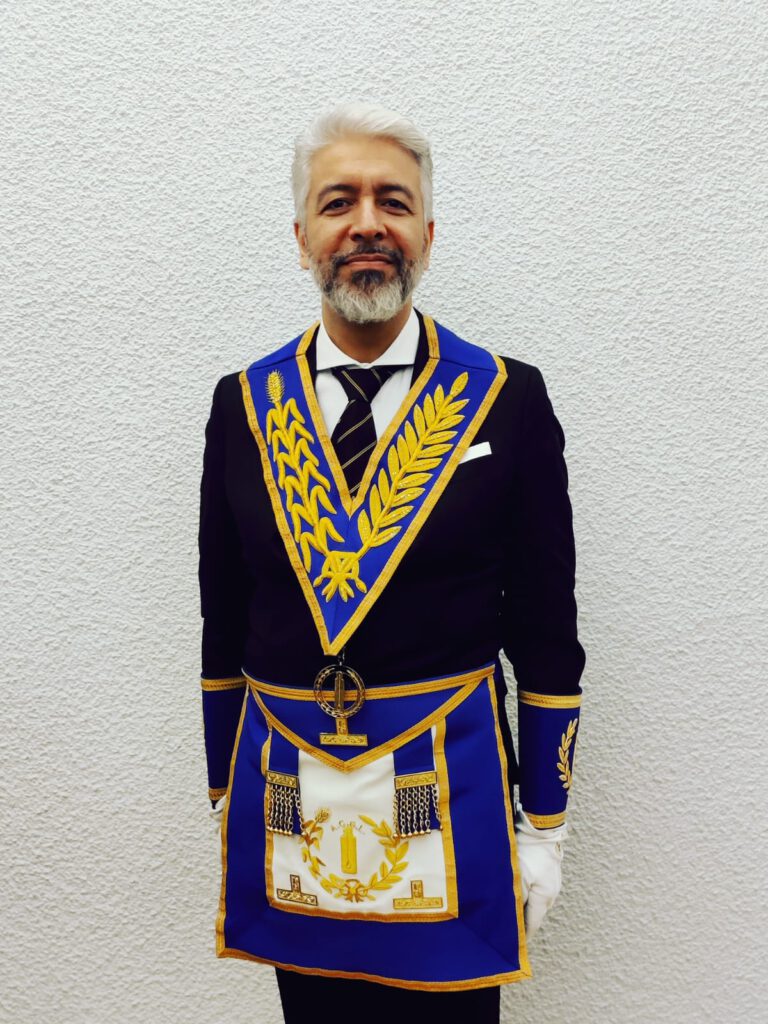
Freemasonry, an ancient and fraternal organization, has long been associated with ritualistic practices, symbolic teachings, and a commitment to moral and ethical development. Beyond its mystical allure, Freemasonry holds within its core principles a profound emphasis on strategic long-term planning. In this writing, I would like to explore the importance of strategic foresight in the various facets of Freemasonry, including membership, IT, legal, and financial aspects. Rooted in Stoic philosophy, these aspects reflect the organization’s commitment to enduring values and principles, urging us to contemplate the future with a strategic mindset.
One of the key aspects of strategic long-term planning within Freemasonry involves the consideration of membership. Unlike many organizations that focus solely on short-term gains, Freemasonry takes a more profound approach, envisioning a future where its principles endure across generations.
The allegorical picture of the plumb line comes into play when we consider the careful selection and development of members. Just as the plumb line ensures vertical alignment in construction, Freemasonry seeks individuals whose moral and ethical foundations align with the organization’s principles. This meticulous approach to membership is an investment in the future, sowing the seeds for a community of like-minded individuals dedicated to personal and collective improvement.
Stoicism, with its emphasis on virtue and wisdom, complements this approach. The Stoic mindset encourages individuals to seek meaningful connections and contribute positively to society, aligning with Freemasonry’s vision of a membership base committed to moral rectitude.
In the digital age, the strategic use of Information Technology (IT) is crucial for the long-term vitality of any organization, including Freemasonry. The square and compass, iconic symbols within Freemasonry, take on new significance when applied to IT planning. The square represents the structured and ethical use of technology, ensuring that it aligns with the organization’s values. The compass, on the other hand, symbolizes the broad vision required for leveraging IT to connect with a diverse and global audience.
Freemasonry recognizes the importance of embracing technological advancements while staying true to its timeless principles. By incorporating IT into its long-term planning, the organization not only preserves its traditions but also adapts to the changing landscape, reaching new generations of seekers.
From a Stoic perspective, the integration of IT aligns with the idea of adapting to the realities of the present while staying true to enduring principles. The Freemason utilizing IT navigates the complexities of the modern world with reason and virtue, leveraging technology as a tool for positive impact.
Furthermore, the legal and financial dimensions of Freemasonry are critical components of its long-term planning. The pillars of wisdom, strength, and beauty, central to Masonic symbolism, find application in the legal and financial stewardship of the organization.
Wisdom, as applied to legal considerations, involves thoughtful governance and adherence to legal standards. The strength of the organization lies in its financial stability, ensuring the ability to weather challenges and support its mission. The beauty of the organization is reflected in its transparency and ethical financial practices, contributing to a positive public image and trust.
Stoicism, with its emphasis on virtue and resilience, resonates strongly in the legal and financial aspects of Freemasonry. The Stoic commitment to ethical conduct and the understanding that some things are beyond our control aligns with Freemasonry’s emphasis on wisdom in legal matters and the strength derived from financial stability.
In an era marked by rapid change and uncertainty, the importance of strategic long-term planning for Freemasonry cannot be overstated. The organization’s commitment to enduring values, coupled with its adaptability to contemporary challenges, positions it as a beacon of stability in an ever-evolving world.
The allegorical pictures of the plumb line, square, and compass serve as timeless reminders of the importance of moral alignment, ethical use of technology, and steadfast governance. As we navigate the complexities of the present, Freemasonry encourages us to think now about the legacy we wish to leave for future generations.
Stoic philosophy, woven into the fabric of Freemasonry, reinforces the idea that strategic planning is not merely about securing the future but about cultivating virtues that stand the test of time. By adopting a Stoic mindset, individuals within the organization can approach challenges with resilience, wisdom, and a commitment to the greater good.
Freemasonry’s emphasis on strategic long-term planning reflects a commitment to values that transcend the temporal. Whether in matters of membership, IT, or legal and financial aspects, the organization’s principles remain steadfast. The allegorical pictures of the plumb line, square, and compass provide a visual language for understanding the importance of moral alignment, adaptability, and ethical governance.
As we contemplate the future, both as individuals and as part of a larger organization, the Stoic wisdom inherent in Freemasonry guides us to think now about the legacy we are creating. By aligning ourselves with enduring principles and planning strategically, we contribute to a future where the pillars of wisdom, strength, and beauty stand as a testament to the timeless values of Freemasonry.
Fraternally your Brother,
Tarik Eker
Junior Grand Warden
